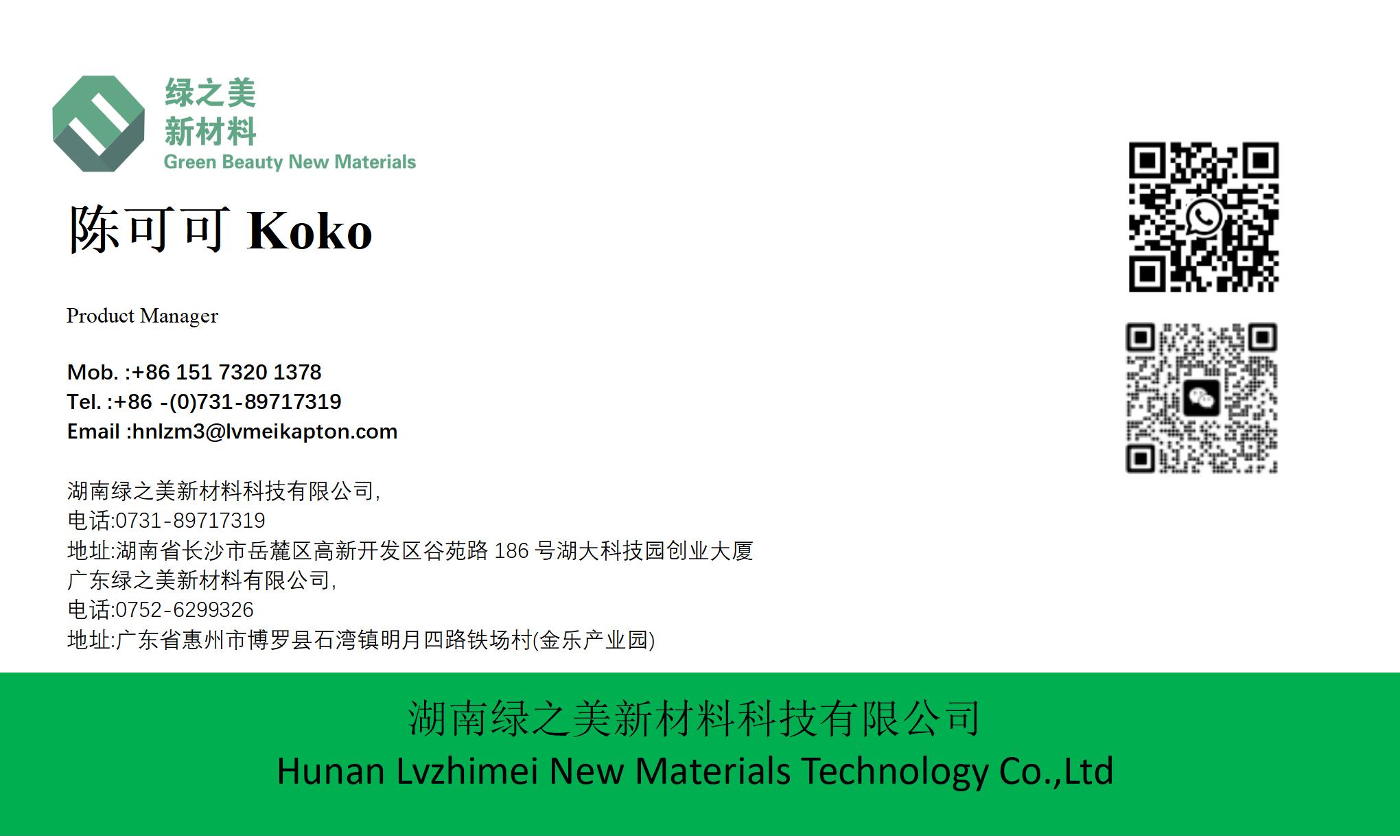hnlzm@lvmeikapton.com
+86 13787123465


Hunan Lvzhimei New Material Technology Co., Ltd.


NameDescriptionContent
When Should "lvmeikapton insulating electrical tape" Be Used Over Other Insulating Tapes in Gold Finger Electronics? |https://www.lvmeikapton.com/
Source:
|
Author:Koko Chan
|
Published time: 2025-07-23
|
20 Views
|
Share:
"lvmeikapton insulating electrical tape" is preferred over other insulating tapes in specific gold finger electronics scenarios. This article identifies these situations, comparing it to "PI material high temperature resistant 300 tape", "Brown circuit board high temperature tape", and others based on insulation, heat resistance, and reliability.
Insulation is critical in gold finger electronics, preventing short circuits between conductive components. While many tapes claim insulating properties, "lvmeikapton insulating electrical tape" stands out in scenarios demanding high temperature resistance, high dielectric strength, and compatibility with gold fingers. Understanding when to choose it over alternatives like "Brown circuit board high temperature tape" or general-purpose PVC insulating tape ensures optimal protection and performance. This article outlines the key scenarios where "lvmeikapton insulating electrical tape" is the superior choice.
Insulation is critical in gold finger electronics, preventing short circuits between conductive components. While many tapes claim insulating properties, "lvmeikapton insulating electrical tape" stands out in scenarios demanding high temperature resistance, high dielectric strength, and compatibility with gold fingers. Understanding when to choose it over alternatives like "Brown circuit board high temperature tape" or general-purpose PVC insulating tape ensures optimal protection and performance. This article outlines the key scenarios where "lvmeikapton insulating electrical tape" is the superior choice.

High-Temperature Electrical Environments (200°C+) necessitate "lvmeikapton insulating electrical tape". Most insulating tapes—like PVC or rubber-based tapes—lose dielectric strength above 100°C, risking electrical breakdown. "lvmeikapton insulating electrical tape", however, maintains its insulation properties (dielectric strength >10kV/mm) up to 300°C, making it ideal for gold fingers in high-heat applications. For example, in industrial furnace sensors, where gold fingers operate at 250°C, the tape prevents current leakage between fingers and the sensor’s metal housing, a task beyond the capability of PVC tape, which would melt at these temperatures.
High-Voltage Applications (1kV+) require its superior dielectric strength. Gold fingers in power electronics—such as inverters or battery management systems—often carry high voltages, where even minor insulation failure can cause arcing or fires. "lvmeikapton insulating electrical tape"’s high dielectric strength surpasses that of "Brown circuit board high temperature tape" (focused on PCB protection, not high voltage) and "Adhesive PET material high temperature tape" (lower dielectric strength). In electric vehicle battery packs (400V+), it insulates gold finger connections between modules, preventing short circuits that could trigger thermal runaway.
Contact with Gold Surfaces demands its gentle adhesion. Gold plating on fingers is thin (0.1-0.5μm), and aggressive adhesives can peel or scratch it, compromising conductivity. "lvmeikapton insulating electrical tape" uses a low-tack silicone adhesive that bonds securely to gold without damaging it, even after prolonged contact. In contrast, some rubber-adhesive insulating tapes can react with gold over time, causing discoloration or corrosion. For instance, in medical device gold fingers (e.g., MRI machine connectors), the tape’s gentle adhesion ensures gold layers remain intact, maintaining sterility and conductivity.
Chemical and Solvent Exposure scenarios highlight its resistance. Gold finger electronics often undergo cleaning with solvents like acetone or flux removers, which can degrade many insulating tapes. "lvmeikapton insulating electrical tape"’s polyimide backing and silicone adhesive are chemically inert, resisting degradation even after repeated solvent exposure. In semiconductor manufacturing, where gold fingers are cleaned with aggressive solvents post-assembly, the tape remains intact, ensuring insulation is not compromised. General-purpose insulating tapes, by contrast, may swell or dissolve, leaving gold fingers unprotected.
Long-Term Operational Reliability in critical systems makes it indispensable. Tapes in aerospace, defense, or medical devices must function for decades without degradation. "lvmeikapton insulating electrical tape" resists UV radiation, moisture, and thermal aging, retaining its insulation properties over time. In satellite gold finger connectors (exposed to extreme temperature swings and radiation), it ensures reliable insulation for 15+ years, whereas PET-based insulating tapes would become brittle and fail within 5 years.
The table below compares key properties, highlighting when "lvmeikapton insulating electrical tape" is preferable:
Scenario | "lvmeikapton insulating electrical tape" | Alternative Tape | Why "lvmeikapton" is Better |
Temperatures >200°C | Maintains dielectric strength | PVC Tape | PVC melts, losing insulation; lvmeikapton remains stable |
Voltages >1kV | 12kV/mm dielectric strength | Rubber Insulating Tape | Rubber tape breaks down at high voltages, risking arcing |
Contact with Gold Fingers | Gentle adhesion, no damage | Aggressive Adhesive Tape | Prevents gold layer peeling or corrosion |
Solvent Cleaning | Chemically inert | Acrylic Insulating Tape | Resists solvent degradation; acrylic swells |
10+ Year Lifespan Requirements | UV/moisture resistant | PET Insulating Tape | PET degrades; lvmeikapton retains properties |
Complementary Use with Other Tapes further clarifies its role. For example, in EV battery management systems:
"PI material high temperature resistant 300 tape" protects gold fingers during 300°C soldering.
"lvmeikapton insulating electrical tape" insulates the gold fingers post-soldering, handling the 400V system voltage and 180°C operating temperature.
This pairing ensures both manufacturing and operational protection, leveraging each tape’s strengths.
In conclusion, "lvmeikapton insulating electrical tape" is preferred in gold finger electronics when high temperatures, high voltages, gold contact, chemical exposure, or long lifespans are involved. Its unique combination of properties addresses these scenarios better than alternatives, ensuring insulation reliability in critical applications.


Hunan Lvzhimei New Material Technology Co., Ltd.
Quick Links
Product Categories
© 2024 Hunan Lvzhimei New Material Technology Co., Ltd.All Rights Reserved. Designed by Erge
0731 - 89717319
hnlzm@lvmeikapton.com
+86 13787123465
Room 502, Chuangye Building, No186, Guyuan Road, High-Tech District, Changsha, Hunan, China
CONTACT



